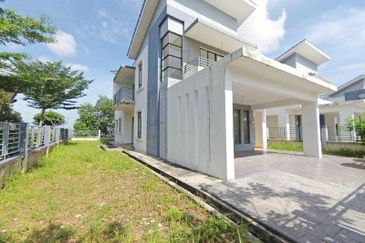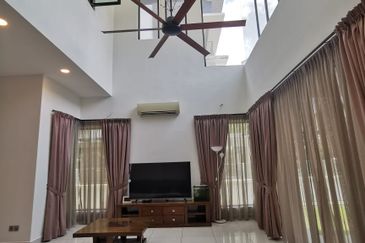![Soam: Since the launch [of MCKIP], we have secured approved and committed investments of RM15.08 billion. There is an additional RM10 billion in the pipeline, which is mainly from China. (Photo by The Edge) Soam](https://dbv47yu57n5vf.cloudfront.net/s3fs-public/editorial/my/2016/September/08/Soam.jpg) WHEN the Malaysia-China Kuantan Industrial Park (MCKIP) was launched in 2013, there were generally no high expectations of the project. Many just viewed it as another “corridor” that would probably involve a slew of land deals.
WHEN the Malaysia-China Kuantan Industrial Park (MCKIP) was launched in 2013, there were generally no high expectations of the project. Many just viewed it as another “corridor” that would probably involve a slew of land deals.
The slowdown in China’s economy did not help matters, casting a pall over the flow of foreign direct investment from MCKIP’s targeted source.
However, MCKIP Sdn Bhd chairman Datuk Soam Heng Choon, who is also the managing director and CEO of IJM Corp Bhd, says any visitor to the industrial park’s site will come away impressed.
“If you are there, you will feel the excitement ... a conveyor belt is being built that will connect Kuantan Port to an iron and steel plant belonging to Alliance Steel ([M] Sdn Bhd). People over here [in Kuala Lumpur] don’t feel it,” he tells The Edge.
He dismisses talk that MCKIP’s progress has stagnated, pointing out that Alliance Steel’s plant is under construction and that production will commence by end-2017.
“When it [the plant] is completed, others, for instance a porcelain plant, will be coming onstream. With all these investments coming in, things will progress. They cannot come in all at the same time,” Soam says.
He feels that the investment figure speaks for itself. “Since the launch [of MCKIP], we have secured approved and committed investments of RM15.08 billion. There is an additional RM10 billion in the pipeline, which is mainly from China.”
In fact, total investments in MCKIP have surpassed the RM10 billion target. Based on the latest figures, some 19,000 jobs will be created by 2020, beating the target of 12,000.
To date, among the Chinese investors in MCKIP are Alliance Steel, which is investing RM5.6 billion in building a modern integrated steel mill; clay porcelain manufacturer Guangxi Zhongli Enterprise Group Co, which is investing RM2 billion; and concrete panel producer LJ Hightech Material Sdn Bhd, which has committed RM1 billion.
MCKIP will likely secure another investor — a solar panel manufacturer — soon, says Soam. “Definitely, it (MCKIP) is not a property play. The industrialists are constructing [plants] and the government has put some effort in infrastructure, not just roads. Also we are expanding the port.”
MCKIPSB is a 51:49 joint venture between a Malaysian consortium and a Chinese consortium. IJM Land Bhd, a wholly-owned subsidiary of IJM Corp, holds 40% equity interest in the Malaysian consortium — called Kuantan Pahang Holding Sdn Bhd — while Sime Darby Property and the Pahang government hold a 30% stake each.
Some 95% of the Chinese consortium’s 49% stake is held by state-owned conglomerate Guangxi Beibu Gulf International Port Group while Qinzhou Investment Co owns the remaining 5%.
MCKIP and the China-Malaysia Qinzhou Industrial Park have been identified by the Malaysian and Chinese governments as “iconic projects for bilateral investment cooperation” that will drive the development of industrial clusters in both countries.
According to Soam, concerns about overcapacity and the downturn in China have prompted more investors to look for new markets beyond their shores.
“We see much more interest now,” he comments when asked if China’s decelerating economy has affected investment flow to MCKIP. “It is true that Malaysians are now averse to investing anywhere in the world or in Malaysia, given the current global economic environment. They want to see more happen before they come in but this may not be the case for China.”
He says Chinese investors are eyeing a bigger market in Asean and the Trans-Pacific Partnership Agreement through their investments in MCKIP, the fruit of which they are likely to reap at a later stage.
He discloses that MCKIP was visited by a high power team from China — a sure sign of interest in the industrial park.
“Subsequent to the visit, we see a lot more investor interest,” says Soam. The delegation was led by the vice-governor of Guangxi province and it brought in more
than 80 investors from all over China.
“They worked with the reform office of China on the number of investors coming here, which actually surprised us. Some of the big names were in the delegations,” Soam adds.
Due to the Chinese investors’ strong demand for land, MCKIP’s total land area has been expanded to 3,000 acres (1,214ha) from about 1,400 acres previously. It is also offering attractive incentives to draw both local and foreign investors.
According to Soam, MCKIP has a huge and critical advantage over other industrial parks in the region — it has Kuantan Port near it. As the port faces the South China Sea, shipping time from Kuantan to southern China is only two to three days, he points out.
“The only country that can create competition for us is Vietnam due to its lower cost and availability of land — not Brunei or Singapore because they don’t have land for manufacturing,” Soam says, adding, however, that the diplomatic relationship between Malaysia and China is better.
Kuantan Port Consortium Sdn Bhd (KPC), in which IJM holds a 60% stake, will be investing close to RM3 billion in doubling the capacity of the port and upgrading the infrastructure. The port’s capacity will be more than 50 million freight weight tonnes in five years’ time compared with 25 million at present while shipments will be increased to up to 200,000 deadweight tonnage from 50,000 now.
Guangxi Beibu International Port Group owns the remaining 40% of KPC.
Kuantan Port — IJM’s next growth catalyst
When IJM Corp Bhd bought over its rival Road Builder (M) Bhd nearly a decade ago, Kuantan Port was probably not the main reason for the acquisition.
Road Builder fully owned Kuantan Port Sdn Bhd, which operates the east coast port, when IJM Corp acquired the group. The new owner then sold a 40% stake in the port to Guangxi Beibu International Port Group.
Now, with the Malaysia-China Kuantan Industrial Park (MCKIP) beginning to attract more investments from China, Kuantan Port could be a growth catalyst and recurring income source for IJM going forward.
“Kuantan Port operated beyond its full capacity of 25 million tonnes last year because of the bauxite exports … the volume was so large that we had to find ways to cope with it. The port actually handled 30 million tonnes.
“But honestly, this won’t be the new norm for us,” says IJM managing director and CEO Datuk Soam Heng Choon.
In its financial year ended March 31, 2016, Kuantan Port generated a pre-tax profit of RM250.5 million, a big jump from RM140.9 million the year before.
Soam points out that Kuantan Port’s growth potential lies in MCKIP’s investors who need a deepwater port to import raw materials and export finished goods.
To Soam, that is the future of Kuantan Port with growing throughput volume, and container shipments.
Currently, the port does up to 95% bulk cargo. Its container business is relatively small and only dominated by car components from Pekan.

To cater for the expected increase in shipment volume, Kuantan Port Consortium Sdn Bhd (KPC), in which IJM holds a 60% stake, will be investing close to RM3 billion in doubling the port’s capacity and upgrading its infrastructure.
Capacity will be more than 50 million freight weight tonnes in five years from about 25 million now while shipments will be increased to up to 200,000 deadweight tonnage from 50,000 DWT.
Soam sees the need to expand Kuantan Port’s capacity as its business has been growing over the last 15 years.
When Alliance Steel starts operations at end-2017, the port can expect about seven million tonnes of cargo, including 3.5 million tonnes coming in as raw materials and another 3.5 million tonnes going out as exports. The volume is expected to be ramped up in later years.
KPC has a concession agreement to operate and develop Kuantan Port for 30 years until 2045. After the expiry, there is another 30-year agreement until 2075, subject to the government’s approval.
Fund managers and analysts are generally positive about the financial impact of MCKIP and Kuantan Port’s expansion on IJM Corp. “More foreign direct investment to set up new plants in MCKIP will see land sale gains and property development earnings for IJM Corp in the short term while generating higher cargo throughput for the port in the long term,” Affin Hwang Capital Research analyst Loong Chee Wei tells The Edge in an email.
He expects IJM Corp’s revenue and earnings to achieve strong growth when the port’s expansion and new plants, such as Alliance Steel’s, are completed in two to three years.
This article first appeared in The Edge Malaysia on Sept 5, 2016. Subscribe here for your personal copy.
TOP PICKS BY EDGEPROP

Section 19 (Seksyen 19) @ Shah Alam
Shah Alam, Selangor

Bandar Mahkota Banting (Brooklands)
Banting, Selangor

Bandar Mahkota Banting (Brooklands)
Banting, Selangor

PJ Transit Oriented Office Building For Sale - Ideal For Corporate Office Headquarters
Petaling Jaya, Selangor

Cyberjaya Enterprise Land 3.43 Acre For Sale - Ideal For Commercial Mixed Property Development
Cyberjaya, Selangor

Bandar Damai Perdana
Kuala Lumpur, Kuala Lumpur

Akira @ 16 Sierra (Sierra 9)
Puchong South, Selangor


















